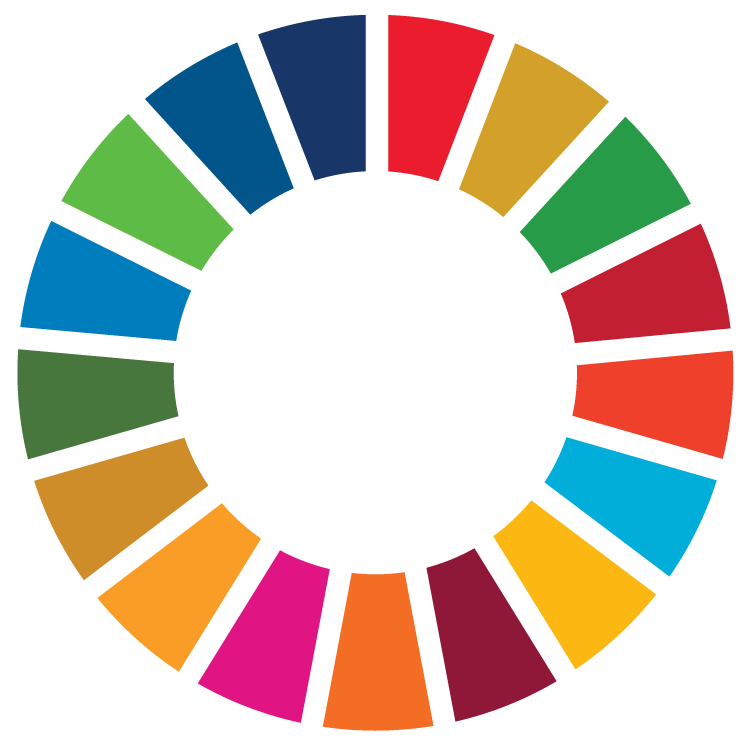Text traduït
Aquesta assignatura s'imparteix en anglès. El pla docent en català és una traducció de l'anglès.
La traducció al català està actualitzada i és equivalent a l'original.
Si ho prefereixes, consulta la traducció!
Texto traducido
Esta asignatura se imparte en inglés. El plan docente en español es una traducción del inglés.
La traducción al español está actualizada y es equivalente al original.
Si lo prefieres, ¡consulta la traducción!
Original text
This subject is taught in English. The course guide was originally written in English.
Course
Early Childhood Education and Primary School Teaching, majoring in English
Subject
English Literature
Type
Optional (OP)
Credits
6.0
Semester
1st
| Group | Language of instruction | Teachers |
|---|---|---|
| G11, classroom instruction, mornings | English | Mireia Canals Botines |
Sustainable Development Goals (SDG)

- 3. Good health and well-being
- 4. Quality education
- 5. Gender equality
- 10. Reduced inequalities
- 16. Peace, justice and strong institutions
Objectives
This course aims to acquaint students with landmark works of English literature but also to support and guide them into the creation of their own stories for children, between 3 and 12 years old. The course starts with an overview of English children's literature to land in the wonderful world of fantasy. From there, students will learn to analyse a text and they will create eight different narrative structures with additional activities. The main purpose is to build literary spaces where teachers can help to improve English learning in their classrooms through creativity. All of this will be driven through discussions, exhibitions and analysis of texts in a class-sharing methodology.
Note: As the subject is taught in English, the students will develop the necessary skills and strategies to teach Literature in CLIL contexts.
Learning outcomes
With this course students will:
- Become acquainted with some of the most celebrated English children's writers and their works.
- Gain a better understanding of what children's literature is, the assumptions surrounding it, and the reading public's expectations of this genre.
- Learn to read children's literature critically and assess its value.
- Identify some of the main structures of drama for children.
- Reflect on the constructions of childhood that the texts endorse.
- Learn about the process of writing a text for children.
- Apply their knowledge of the English language to the reading, writing and discussion of the selected texts.
Competencies
Specific skills
- Acquire basic notions of the construction of knowledge in order to integrate them into educational activities that promote meaningful learning processes.
- Analyse, reflect on and promote the importance of teaching within the educational community, cultural life and society in general.
- Design, plan and assess teaching proposals for different areas of the curriculum, consistent with theories of learning and encouraging cooperative work.
- Develop and adapt educational resources for different curricular purposes, using information and communication technology as basic tools for learning.
- Manage and promote teaching and learning processes through tutoring in the early childhood classroom in a climate of tolerance and affective communication.
- Manage learning spaces in contexts of diversity and inclusion, taking into account the needs arising from disorders and learning difficulties, in order to establish appropriate guidelines for intervention in collaboration with other services, professionals and families.
- Promote the development of global communicative competence in multilingual contexts by using different strategies and linguistic and literary resources.
Basic skills
- Students have developed the learning skills necessary to undertake further studies with a high degree of independent learning.
Core skills
- Exercise active citizenship and individual responsibility with a commitment to the values of democracy, sustainability and universal design, through practice based on learning, service and social inclusion.
- Use oral, written and audiovisual forms of communication, in one's own language and in foreign languages, with a high standard of use, form and content.
Content
- The creation of 8 children tales through the learning and understanding of 8 narrative structures
- Participation in the International Conference Storytelling Revisited
- A Collaborative Online International Learning with the University Roma Tre (Italy)
- The creation and exhibition of a storybook
- A Creative Jam Session
Evaluation
All students must complete the following activities in accordance to deadlines in order to reach a passing mark for the whole course:
- 3 practical presentations of written works: 30%
- A storybook: 20%
- Attendance and active participation: 30%
- Practical COIL (Collaborative Online International Learning) exercise: 10%
- Practical analysis out of the Creative Jam Session: 10%
Methodology
Class-sharing methodology is applied to the didactics of the subject, enhancing the critical and analytic spirit of the students enrolled. In addition, the design thinking technique generates confidence in students in relation to their creative abilities.
Bibliography
Key references
- Hunt, P. . (2001). Children’s Literature. Blackwell.
- Lazar, G. (2002). Literature and Language Teaching. A guide for teachers and trainers (2 ed.). Cambridge University Press.
- Lepri, Ch., i Canals Botines, M. (2018). Lionni’s Little Blue and Little Yellow: The Joy of the Encounter. Revista internacional de culturas y literaturas.
- Lesnik-Oberstein, K. (2000). Children’s Literature. Criticism and the Fictional Child. Clarendon Press.
- Rodari, G. (1996). The Grammar of fantasy. An Introduction to the Art of Inventing Stories. Teachers & Writers Collaborative.
Further reading
Teachers will provide complementary bibliography and compulsory reading throughout the course via the Virtual Campus.